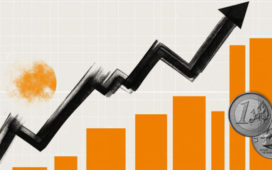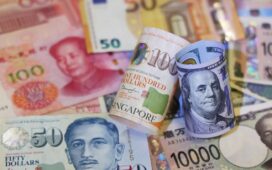- The US Dollar Index edges to 99.60 as the Taiwan Dollar posts the biggest intraday jump in over 30 years.
- ISM Services PMI climbs to 51.6 in April, beating estimates and March’s 50.8 reading.
- Treasury Secretary Bessent says trade deals may be reached this week; deficit reduction targeted.
- Market activity remains thin with holidays in China and the United Kingdom.
The US Dollar Index (DXY), which measures the value of the US Dollar against a basket of currencies, posted mild gains on Monday as the Taiwan Dollar surged over 5%. The move sparked a broader rally in Asian currencies amid speculation of FX conversions by exporters. Markets remained thin with multiple public holidays affecting liquidity.
Daily digest market movers: US Dollar tumbles on Taiwan FX move and trade deal hopes
- US Treasury Secretary Scott Bessent said the United States may finalize some trade deals as early as this week, sparking optimism.
- Bessent expressed confidence that 17 trading partners, excluding China, have presented “very good” proposals that are under review.
- The Secretary expects US economic growth could return to 3% by this time next year if current plans are implemented.
- He mentioned a goal to lower the Congressional Budget Office projections and reduce the federal deficit by about 1% annually.
- Bessent pointed to strong private credit growth as a sign that US banking regulations are excessively tight and need adjusting.
- He also noted that China has only made public offers in trade negotiations, with no new developments privately disclosed.
- The Taiwanese Dollar’s 5% surge, the largest since the early 1990s, triggered widespread selling of US Dollars in Asian FX markets.
- Exporters in Taiwan are believed to be converting USD holdings in anticipation of an appreciating domestic currency to secure trade gains.
- The Taiwan-US negotiations reportedly held their first official meeting on May 1, though no outcomes were revealed.
- Market activity was unusually thin, with China and the United Kingdom closed for holidays, exacerbating FX volatility.
- The ISM Services PMI rose to 51.6 in April, beating both March’s reading and analyst expectations, signaling steady US service sector activity.
- The Employment Index from the same report climbed to 49.0, suggesting some labor market improvement within the service industry.
- The Prices Paid Index jumped to 65.1, raising concerns that underlying inflation may remain sticky despite recent easing in headline figures.
- Despite the positive ISM data, the US Dollar Index fell, pressured by external FX dynamics and lowered Fed rate hike expectations.
- Traders are increasingly confident the Federal Reserve will hold rates steady at the 4.25%–4.50% range in the upcoming meeting.
Technical Analysis
The DXY Index currently trades at 99.93, up 0.08% on the day, within a daily range of 99.46 to 100.05. Momentum remains neutral with a Relative Strength Index (RSI) of 40.84, while the Moving Average Convergence Divergence (MACD) flashes a buy signal. However, the 20, 100, and 200-day simple moving averages — at 100.13, 105.38, and 104.39, respectively — all point to continued bearishness. Additional downward pressure comes from both the 10-day and 30-day EMAs, which sit at 99.77 and 101.09. Key support is located at 99.60, with resistance at 99.77, 100.08, and 100.13.
US Dollar FAQs
The US Dollar (USD) is the official currency of the United States of America, and the ‘de facto’ currency of a significant number of other countries where it is found in circulation alongside local notes. It is the most heavily traded currency in the world, accounting for over 88% of all global foreign exchange turnover, or an average of $6.6 trillion in transactions per day, according to data from 2022.
Following the second world war, the USD took over from the British Pound as the world’s reserve currency. For most of its history, the US Dollar was backed by Gold, until the Bretton Woods Agreement in 1971 when the Gold Standard went away.
The most important single factor impacting on the value of the US Dollar is monetary policy, which is shaped by the Federal Reserve (Fed). The Fed has two mandates: to achieve price stability (control inflation) and foster full employment. Its primary tool to achieve these two goals is by adjusting interest rates.
When prices are rising too quickly and inflation is above the Fed’s 2% target, the Fed will raise rates, which helps the USD value. When inflation falls below 2% or the Unemployment Rate is too high, the Fed may lower interest rates, which weighs on the Greenback.
In extreme situations, the Federal Reserve can also print more Dollars and enact quantitative easing (QE). QE is the process by which the Fed substantially increases the flow of credit in a stuck financial system.
It is a non-standard policy measure used when credit has dried up because banks will not lend to each other (out of the fear of counterparty default). It is a last resort when simply lowering interest rates is unlikely to achieve the necessary result. It was the Fed’s weapon of choice to combat the credit crunch that occurred during the Great Financial Crisis in 2008. It involves the Fed printing more Dollars and using them to buy US government bonds predominantly from financial institutions. QE usually leads to a weaker US Dollar.
Quantitative tightening (QT) is the reverse process whereby the Federal Reserve stops buying bonds from financial institutions and does not reinvest the principal from the bonds it holds maturing in new purchases. It is usually positive for the US Dollar.





